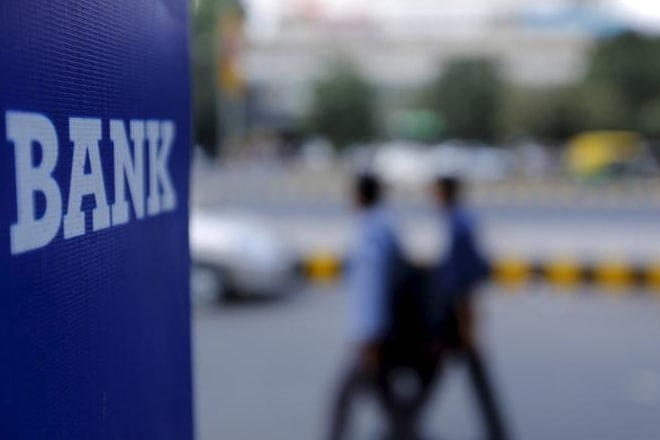The recent RBI data affirms that credit growth in banks is at its historic low. Non-food credit grew by 3.5% year-on-year (y-o-y) in January 2017, compared to 9.8% in January 2016. During the period, credit to agriculture, services sector and retail (personal) loans has grown by 8.1%, 8.1% and 12.9%, respectively, while it contracted by 5.1% for industry. The sharpest decline in lending has been in MSME sector which has immense scope and is already credit starved. The credit-deposit (CD) ratio of the banks too has come down from 76% on February 5, 2016 to 71% on February 3, 2017.
The slowdown in credit growth is more pronounced in public sector banks (PSBs), as credit growth in private banks is still in the range of 25%. With dip in credit growth, the bank investment in bonds is growing at 16-18%. Slowly, PSBs are finding comfort in lazy banking which will be pernicious in the long term, as market share once lost to competitors is difficult to regain.
Lending rates were brought down, but slow credit growth has continued. More than the interest, it is necessary to work out specific strategies to reach out to potential borrowers. There is obviously no dearth of market potential as private banks have been able to lend. It is, in fact, the PSBs that need to lend to protect its fragile bottom line.
Also Watch:
Entrepreneurs are good at finding alternative sources to meet their funding needs even at an added cost. The borrowers look at convenience and ease of access to credit more than cost. This is evident from increasing flow of finance to commercial sector from non-bank sources as the scope of bond/debt/overseas market is getting widened. Therefore, prolonged muted credit growth is a threat to the banking industry, and more so to PSBs. The entry of small finance banks can further erode scope of lending of PSBs. Their role in funding economic growth may get marginalised too soon unless the PSBs act fast to restore the lending appetite.
It is a fact that due to elevated state of NPAs, many banks had to divert their human resources to tackle follow-up and recovery of bad debts. Lending activities got adversely impacted due to dearth of resources. In the meantime, the sudden gush of activities related to demonetisation intercepted even the sporadic lending. As a result, during Q3 FY17, PSBs had almost halted their lending activity.
But it is increasingly becoming obvious that banks have to learn to live with high NPAs—the new normal. They need to work out sustained lending strategies even while managing large scale presence of bad loans. The series of credit monitoring measures introduced by RBI from early 2014 have to be made an integral part of credit operations. Innovating methods of using technology to intensify monitoring of credit is essential to balance fresh lending and managing existing portfolio including NPAs.
PSBs also have to meticulously work on creating a credit dispensing ecosystem that can transcend ‘ease of lending’ for staff and ‘ease of borrowing’ for consumers. This calls for articulating separate sectoral credit policies. With economy tilted towards service sector and MSME having large scope for financing, the era of a universal loan policy is fast ending. Banks will have to devise separate loan policies for each sector of advances to provide comfort to line management. ‘One size fits all’ type of loan policy does not create an enabling environment for branches to ensure speedy credit dispensation.
Each sector of loan has its own customised needs with differentiated project/borrower profiles and peculiarities. In a competitive environment, it is difficult to make all types of borrowers to fall in line with same uniform loan policy norms. Due to practical constraints in complying with all the loan policy norms, bank branches may be losing a lot of lending opportunities. Few aggressive people have to face staff accountability issues if they deviate in business interest. Moreover, there is neither incentive for lending nor disincentives for not lending. Even honing appropriate skills sets for lending to each sector of borrower will be essential. Proper recognition and reward of good performance need to be institutionalised in PSBs to inspire people to lend and compete.
Similarly, business process re-engineering in credit appraisal, rating, documentation and delivery of credit keeping increasing digital appetite of new generation borrowers is necessary. PSBs must be able to deliver a hassle free experience to potential borrowers. Seminal changes in work flows will be essential for ensuring ‘ease of borrowing’. The procedures need to be aligned so that a borrower can get loan in one or two visits to branch. The borrower should be able to track online the progress about stages of credit processing. This will enhance borrower satisfaction.
Recent statistics of benign impact of ‘notebandi’ on the GDP of Q3 FY17 is a clear pointer that neither cash nor bank credit is inevitable to keep the economy moving. It is in the interest of PSBs to stay in market by stepping up flow of credit. PSBs should reinforce credit appetite by combining ‘employee’ and ‘borrower’ comfort. Further delay on the part of PSBs in carving out lending niche will slowly and steadily force lazy banking. High NPAs cannot be a perpetual reason to abstain from lending. PSBs should learn to lend and manage NPAs as an integrated function to stay relevant in the financial system.
The author, K Srinivasa Rao, is Associate Professor, National Institute of Bank Management, Pune.
Views are personal


